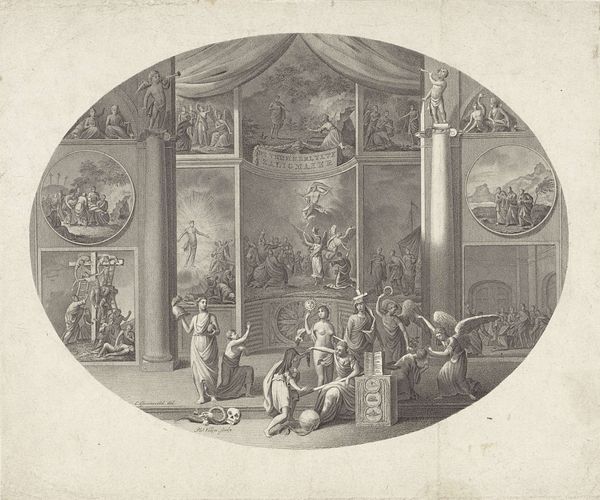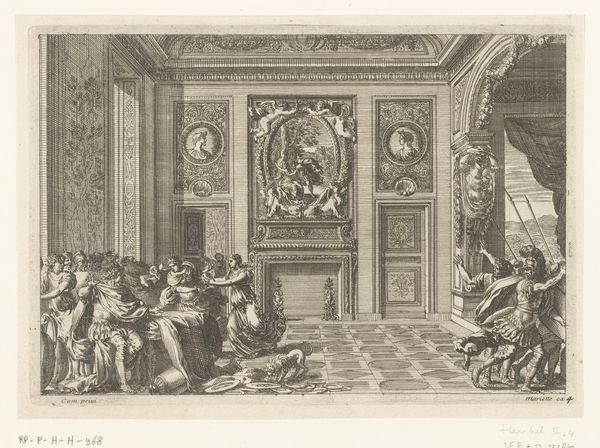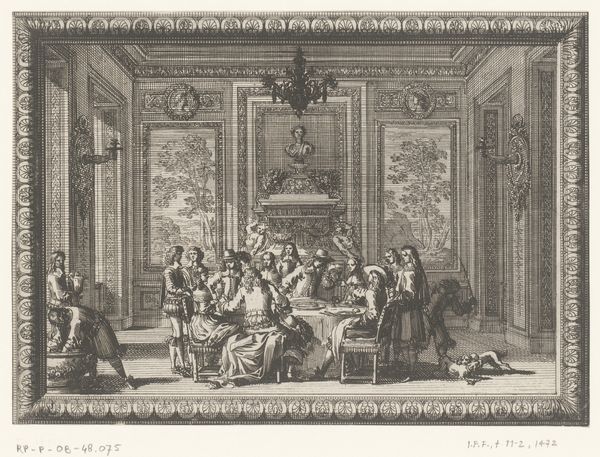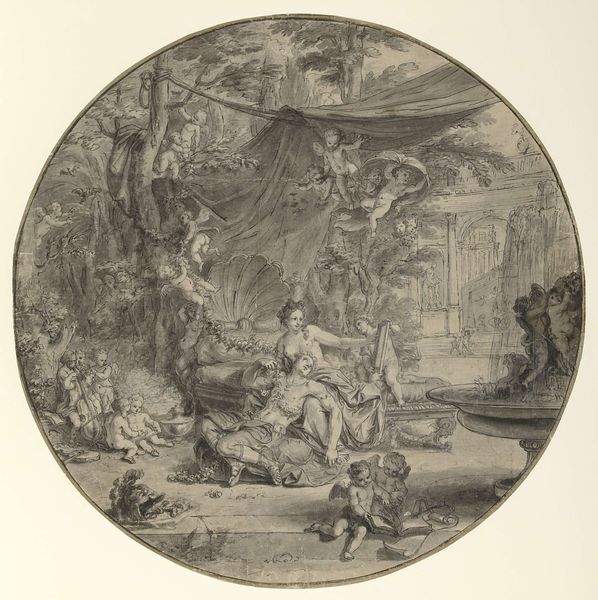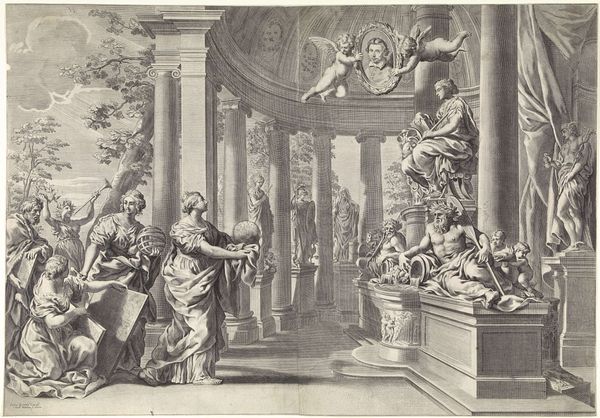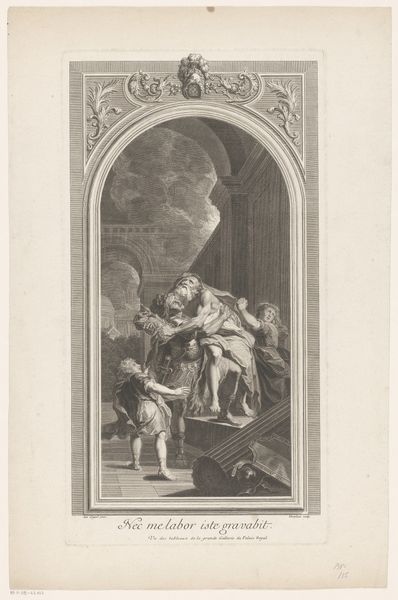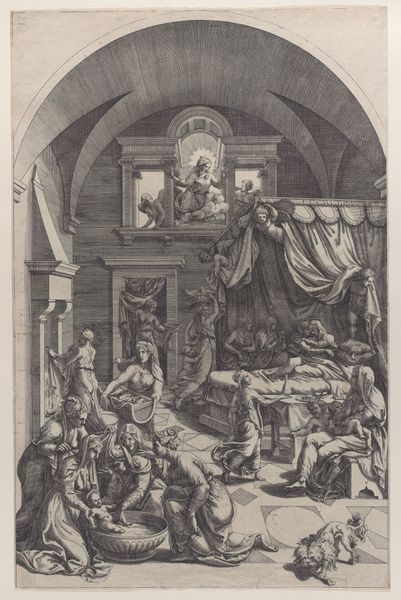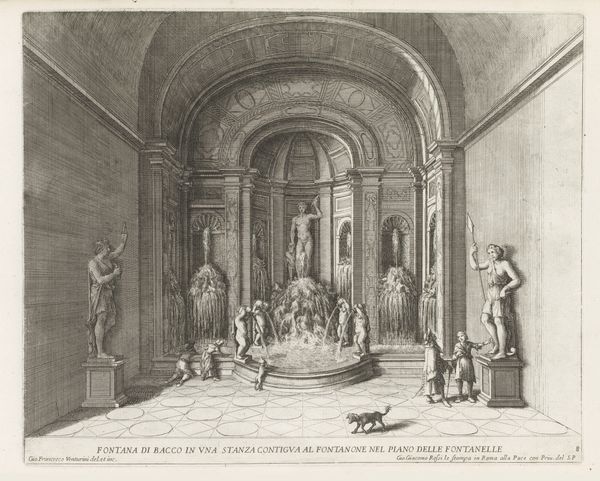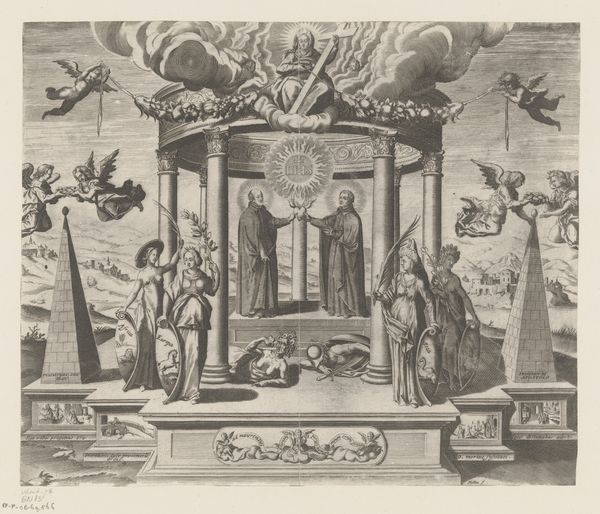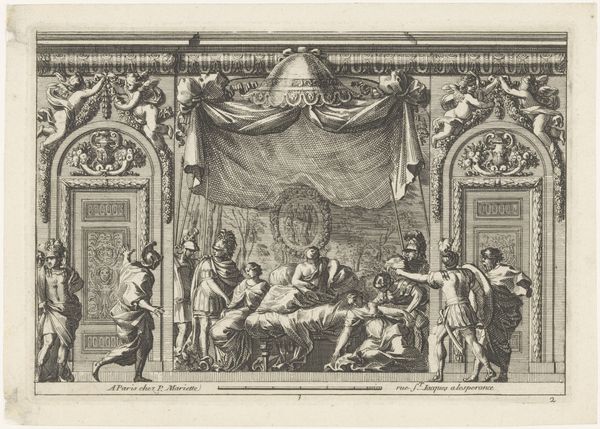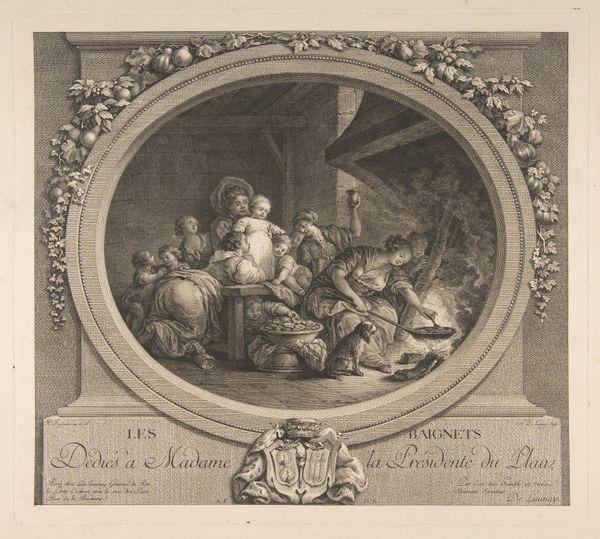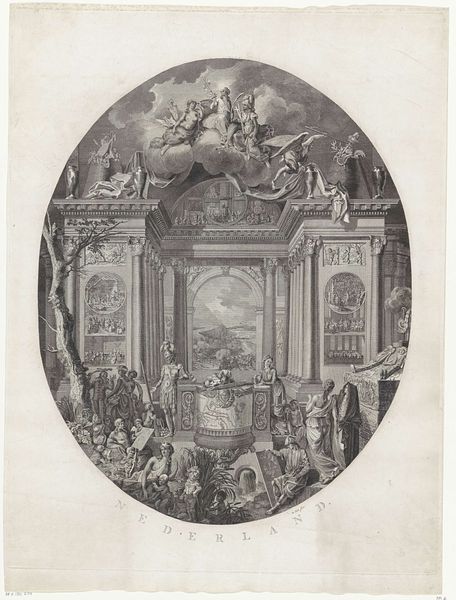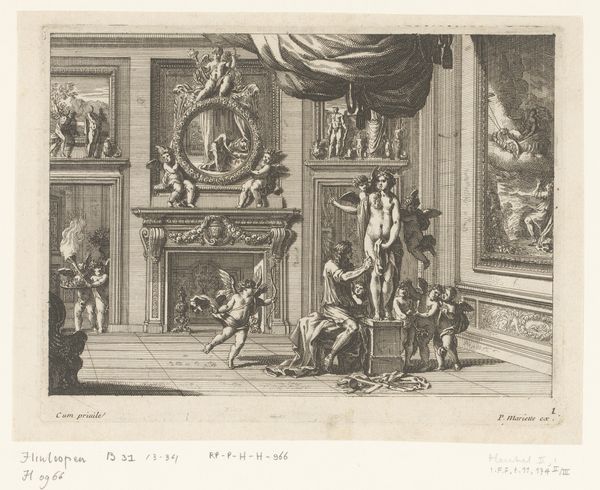
Allegorie met voorstellingen uit de Passie van Christus 1790 - 1858
0:00
0:00
pietervandermeulen
Rijksmuseum
Dimensions: height 283 mm, width 350 mm
Copyright: Rijks Museum: Open Domain
Curator: Pieter van der Meulen created this engraving, “Allegorie met voorstellingen uit de Passie van Christus,” sometime between 1790 and 1858. The artwork, now residing at the Rijksmuseum, depicts an elaborate allegory. Editor: It certainly does feel… congested. The oval frame struggles to contain the composition's many figures and architectural elements. It feels overwrought, almost baroque in its intensity, though it's from a later period. Curator: The Baroque influence is evident in the dramatic composition and use of light and shadow. Notice how the scene is divided into different planes. The foreground features allegorical figures in classical robes, gesturing dramatically, while the midground contains scenes from Christ's Passion. And above, an elliptical design continues to reveal even more scenes. Editor: This feels very much like a history painting embedded with multiple allegorical representations. Look at the female figure standing next to the crucifix, and note her placement atop a pedestal. Who might she signify in this Passion narrative? Curator: The central female figure likely represents Ecclesia, the personification of the Church. She holds a chalice and host, symbols of the Eucharist, anchoring the imagery of Christ’s sacrifice within a religious framework. The figures around her emphasize the drama: notice the theatrical poses. Observe how van der Meulen employs line to direct the eye. Editor: Absolutely. I appreciate the artist's attention to line quality and its structural implications. However, in the 19th century context, considering broader sociopolitical narratives, this overt emphasis on Christian allegory also suggests something about power, cultural hegemony, and perhaps even anxieties about shifting social norms during the depicted period. Is the artist seeking to reassure, or perhaps convince? Curator: A valuable point to raise. The work indeed embodies academic art practices that blend historical themes with religious and moral allegory. This perspective gives an additional layer to interpretation. The precise engraving work displays an undeniable skill. Editor: It prompts consideration, then, of the piece within its socio-political moment. An artwork meant to assert, perhaps, but open to questions of whom it served, and whom it might have implicitly excluded through its choices. Curator: Yes, a fine piece in which we find a complex layering of religious history and technique. Editor: Leaving us with the space to think more deeply about the cultural implications of this artwork.
Comments
No comments
Be the first to comment and join the conversation on the ultimate creative platform.
